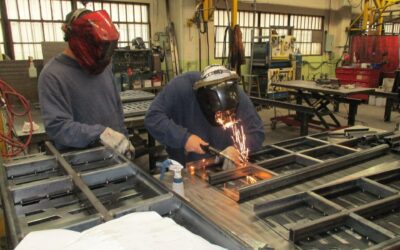Your Preventive Controls for Human Food (PCHF) food safety plan may consist of one or more HACCP plans, prerequisite programs like current Good Manufacturing Practices (cGMPs), recall plan, supply chain program, and any other PCHF requirements that might apply to your business.
These prerequisite programs play an essential role in identifying and controlling potential risks – and if properly established and effective, they provide your food safety team with valuable data for decision-making.
DOWNLOAD OUR FOOD SAFETY MAINTENANCE PROGRAM CHECKLIST
FSMA Preventive Compliance is Rooted in Prerequisite cGMPs
Systemic adoption of the following can help your team to focus on the risks that really matter:
- Documented working knowledge of biological, ecological, and environmental considerations of each facility/building
- Written integrated pest management plan: sanitation, housekeeping, interior and exterior pest management including monitoring and education
- Working hazard identification system – plant managers need open communication about their facility’s conditions so that corrective actions can occur, and swiftly
- Active maintenance tracking system – issues should be properly tracked, visible, and kept “open” until they are solved and officially “closed”. Don’t forget to monitor the success of the solution!
- Right-size and record your pest thresholds and what actions to take when the limits are hit, including identification of a primary point of contact. See below for an example.
- Create a centralized library for records and documents. These can include the following:
- Proof of training/license/credential for anyone administering pesticides
- Credentials for all 3rd party pest management providers
- Corrective action reports
- SDS and labels
- Lubrication plans
- Floor plan showing interior and exterior devices, along with treatment used
- Pest sighting logs and trend reports
- Service reports – including provider, services provided, and date
- Equipment breakdown and maintenance logs
- 5S audits relative to housekeeping
Pest Threshold Example – House Fly
Pest thresholds as part of a written food safety plan come in all forms. For example, when controlling for House Flies, a plan created by a pest management company could look like the following:
Pest: House Fly
Location: Production Areas, Warehouse, Shipping or Receiving
Event: Sight of a cluster: 2 flies, or potential cluster, alive or dead anywhere inside the plant
Action:
- Alert Facilities Manager and record observation in a log.
- Facilities Manager to investigate the source.
- Enlist the help of plant personnel as needed to eliminate larvae and entry routes, which might include holes and gaps, as well as a receipt of flies or larvae in contaminated shipments.
- Install at least three supplemental traps in the vicinity. Check them daily and record any evidence of sustained presence.
DOWNLOAD OUR FOOD SAFETY MAINTENANCE CHECKLIST
If you have questions about food safety or need support on your journey to FSMA compliance, we have resources available for you. Reach out at any time to learn more.
You can also view our FSMA compliance cohort success story to learn more.



